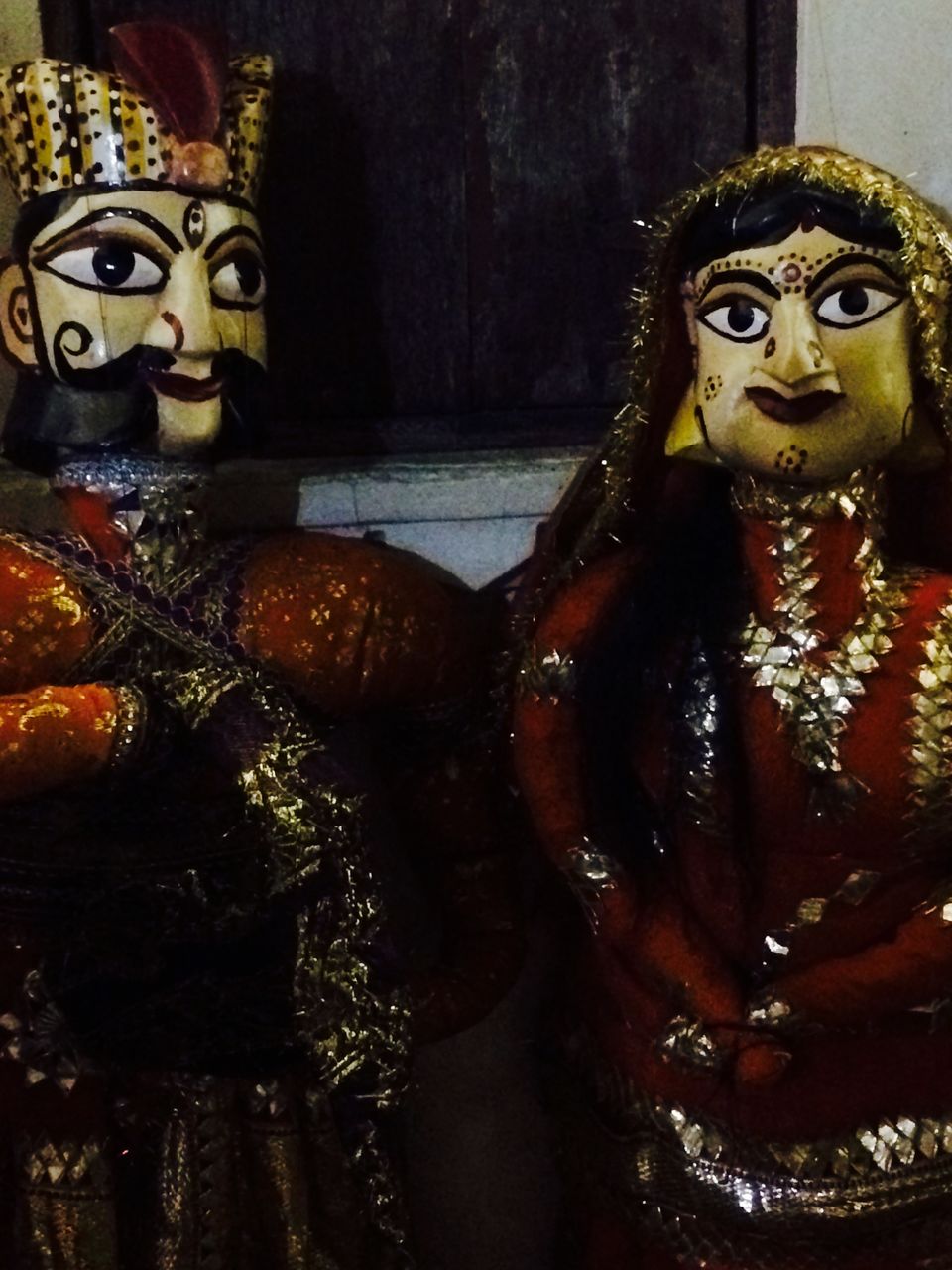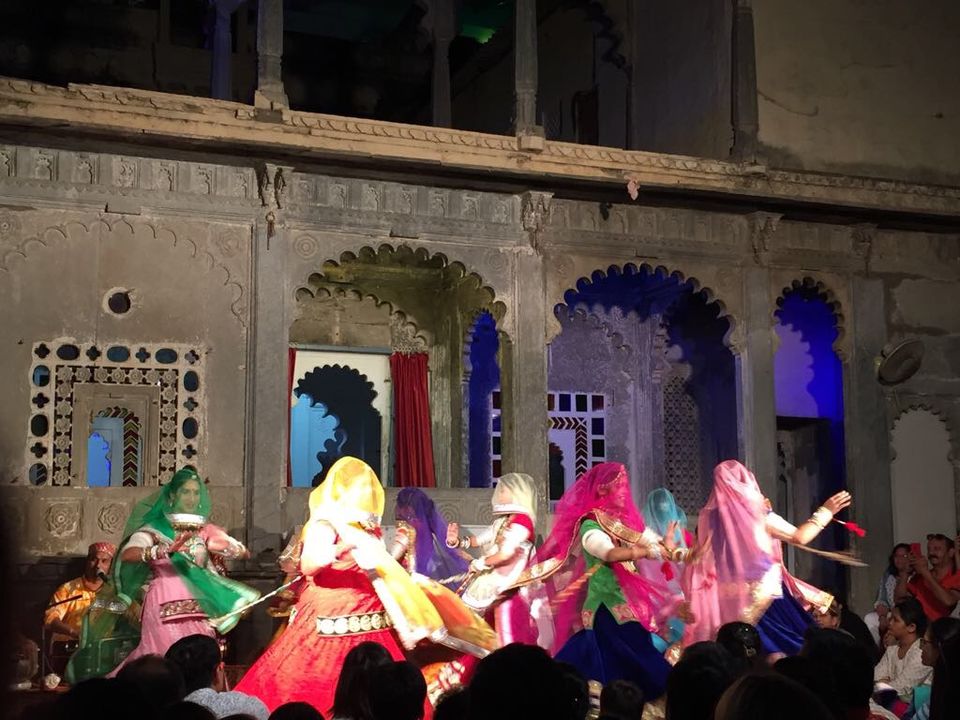
I waited at Bagore ki Haveli for an hour to buy my paper ticket from an old man catering to the overwhelming crowd all by himself through his pen and ticket book. Although the crowd standing in the queue was running out of patients but this man went on with his speed without any waver. The queue was therefore elongated, that by the time I reached closer to the ticket window the seats for the first show were over. This left many disappointed.Very few including me showed the courage to stay in the queue to buy the ticket for the next show, which had to start just after the first one is over.
This day and age, many of us may consider this being an unorganized and obsolete way to sell tickets but certainly not me. The reason why Rajasthan is my favorite destination in the world is because this place is still original and closest to its roots. They haven’t replaced human interactions with computers or with an online world. The sense of clothing, the dialect of people and the hospitality in their blood stays true to what it was in history even today.
Why and How? Each minute of wait in the queue at Bagore ki Haveli (Mansion of Bagore) was absolutely worth it, is described here.
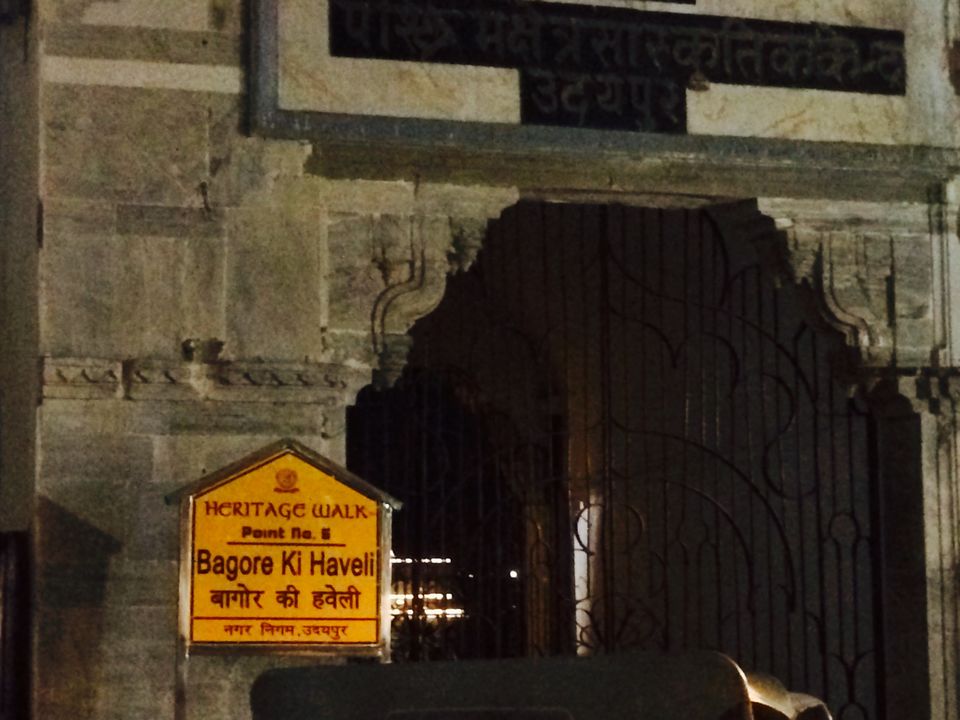
Where is Bagore ki Haveli
Bagore ki Haveli is located near Gangaur Ghat situated on the banks of Pichola Lake in the city of Udaipur, Rajasthan.
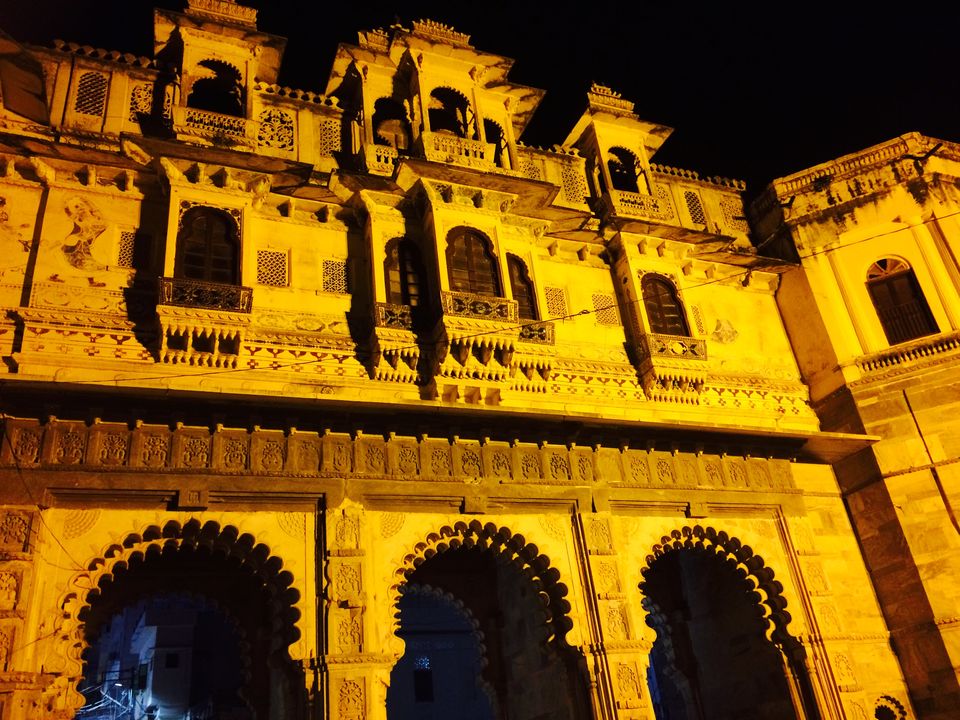
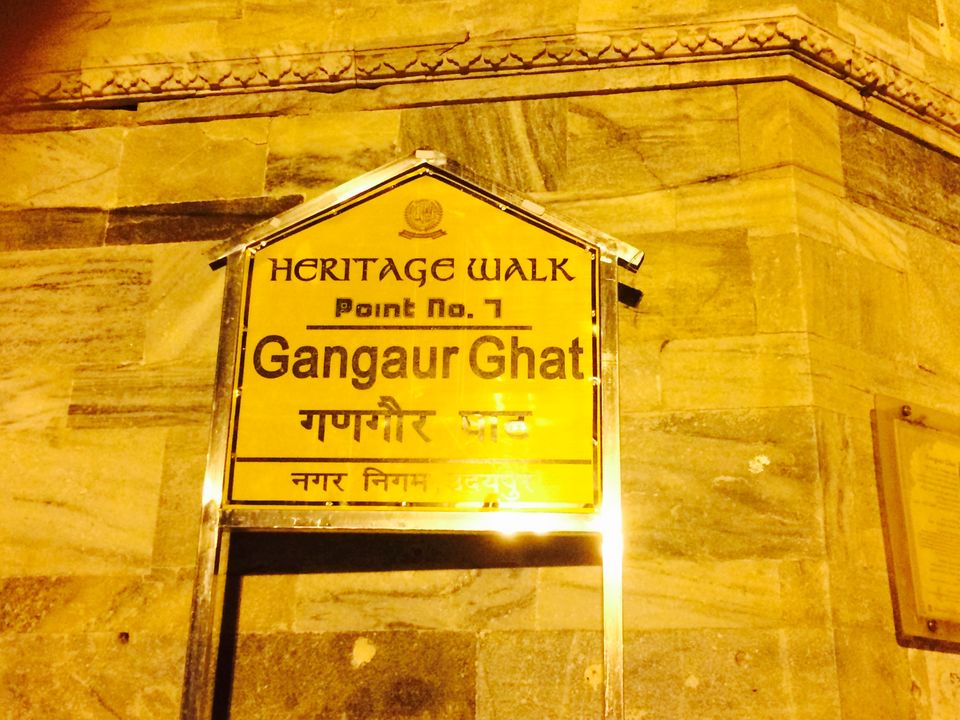
How to reach
Udaipur is well connected with major Indian railway stations. It also have a domestic airport called the Maharana Pratap or Dabok Airport. (For rail reservations visit www.irctc.co.in) This Haveli is located in the old city area which has narrow lanes leading to lakes and major tourist destinations. These lanes are often jammed due to high traffic hence avoid testing your driving skills and go for a Tuk Tuk ride which are reasonably available.
History of Bagore Ki Haveli
This Haveli was built in the 18th Century by Shri Amarchand Badwa, who was the Prime Minister of Mewar from 1751 to 1778. The Haveli remained in the possession of Mewar State until 1947. After Independence, the Government of Rajasthan used this building for housing Government employees for almost forty years with no attention paid to restore this heritage. The Government was eventually persuaded to relinquish their hold on the Haveli and in 1986; it was handed over to the West Zone Cultural Centre of India.
The Haveli was restored using local and traditional materials and skills primarily. Several murals done in the 18th and 19th century were uncovered and many doors, windows and perforated screens were repaired or replaced. To provide the same royal look, experts and members of the Royal family were consulted.
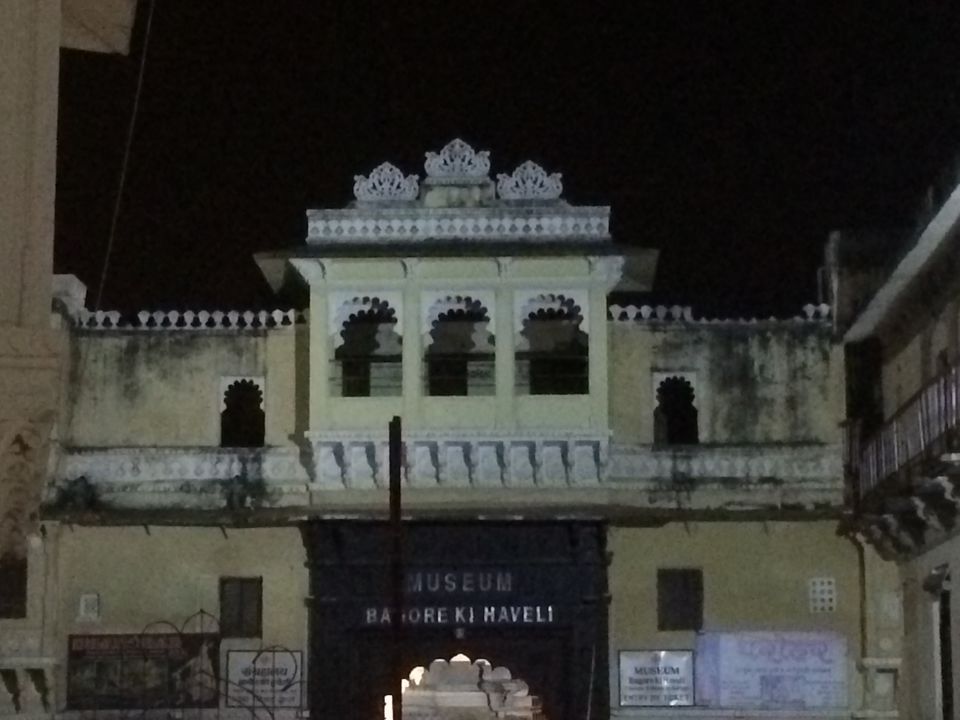
Bagore ki Haveli Museum
The treasures of this heritage site can be experienced by the travelers as most of its area is open to public as museum. The Haveli embraces 138 rooms and is lined by innumerable corridors, courtyards and balconies. The interiors of the Haveli are embellished with intricate and fine mirror work. While strolling in the Haveli, the private quarters of the royal ladies, their bath rooms, dressing rooms, bed rooms, living rooms, worship rooms and recreation rooms can be seen. A gigantic turban is out on display in the turban section of the museum.
Entry Fee: INR 60
Visiting Time: 10:00 am – 05:30 pm daily
Visit Duration: 02 hours
Dharohar (Heritage) Dance Show at Bagore ki Haveli
This place comes into light and action from 07pm onwards when the stage is set to experience the world renowned Rajasthan folk dances. There are two shows showcasing the culture, beauty and talent of Rajasthan locals at Neem chowk, an area inside the Haveli where the shows take place.
The first show starts at 07pm and second at 08pm which goes on for an hour at the same venue.
After climbing the quaint stairs of Haveli, there is a small courtyard surrounded with a Neem tree right in centre. Entire courtyard and its surrounding balconies are ignited with colorful lights with a stage in center, for the artists to perform. The seating is arranged in a very local style with rugs placed on the floor and few elevated benches behind them. Try to occupy a place in the center to have the best angle to click pictures.
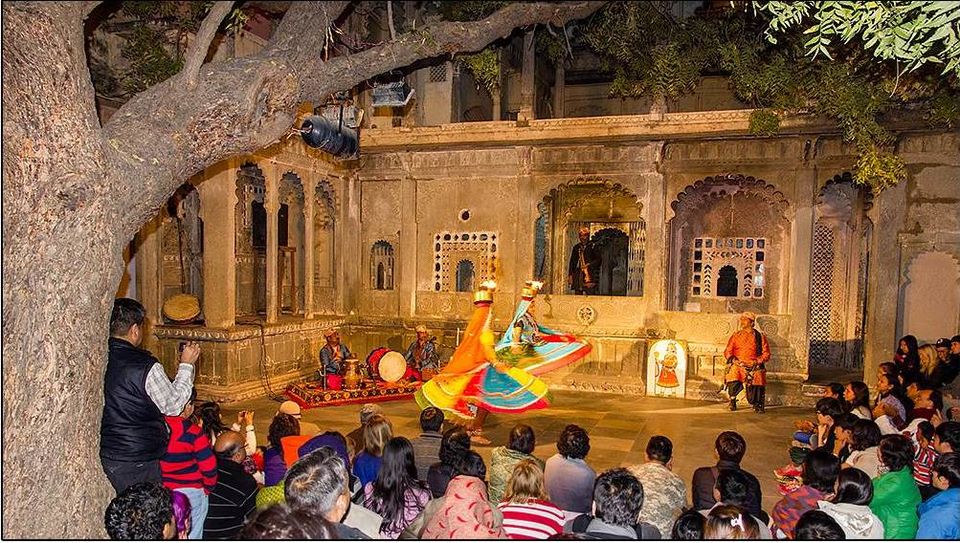
The evening and guests both are welcomed with drums, conch shell and the traditional and conspicuous song of Rajasthan “Padharo mhare desh”. This musical welcome is followed by the introduction by the local moderator describing the significance of each in Hindi and English both.
The evening begins with the Chari Dance, presented by the local Rajasthan women with ignited brass pots on their heads. Rajasthan is a desert area, where women walk for many miles to collect water for their families. They collect their daily water in Chari (Pots). This folk dance celebrates this lifelong ritual of collecting water. The Chari dance is performed in Rajasthan at marriage celebrations, on the birth of a male child and festivals.
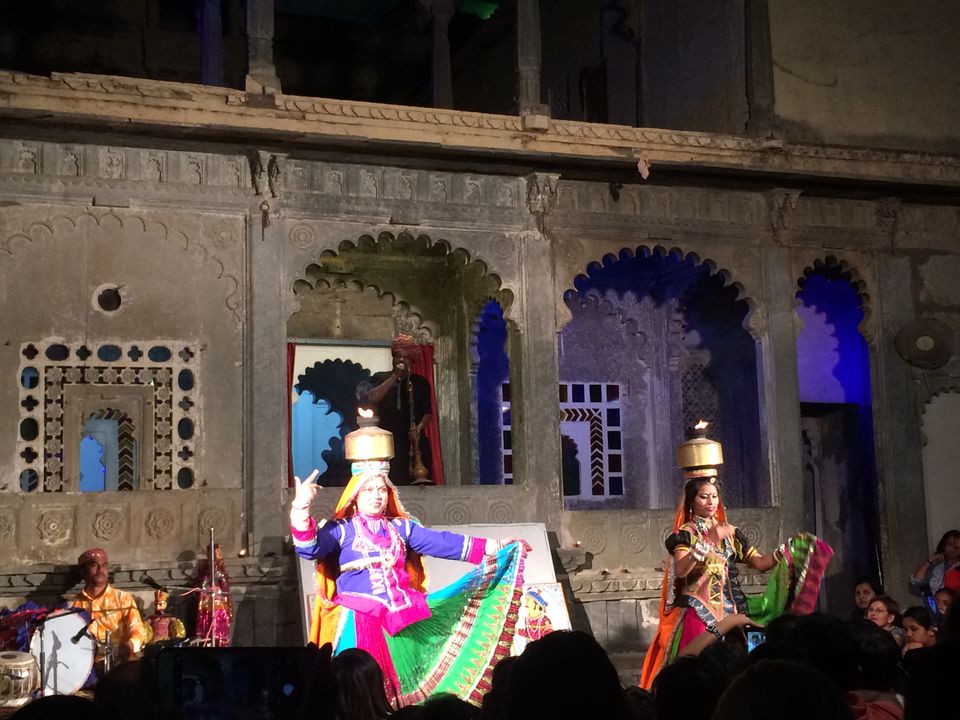
Then begins the world known Goomer performance. Goomer dance was performed by the ladies of Royal families in yesterdays on all auspicious occasions and festivals hence this dance was also known as dance of Royal ladies.
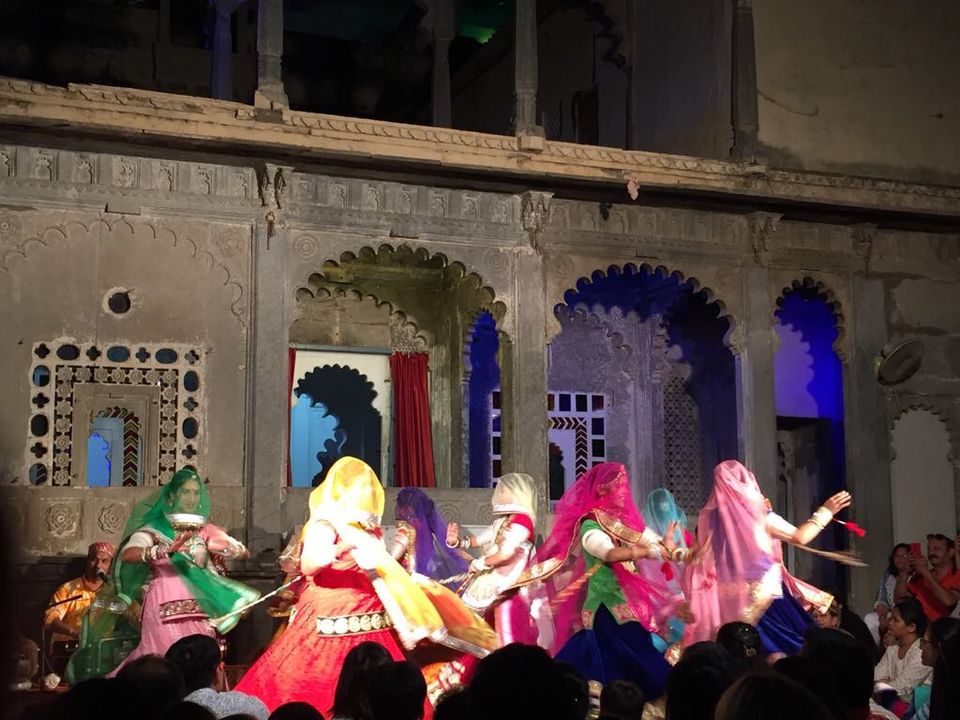
The next performance is the “Terah Taali Dance” where all the female dancers play thirteen different Manjiras (Cymbal) tied on their hands and legs. This creates a rhythm on which the dancers move. The dancers perform various arabesques with their hands and the same time also balance pots on their hands and hold a sword in their mouth, for making the performance more attractive. This folk dance is performed by the Kamada tribes who are traditional snake charmers.
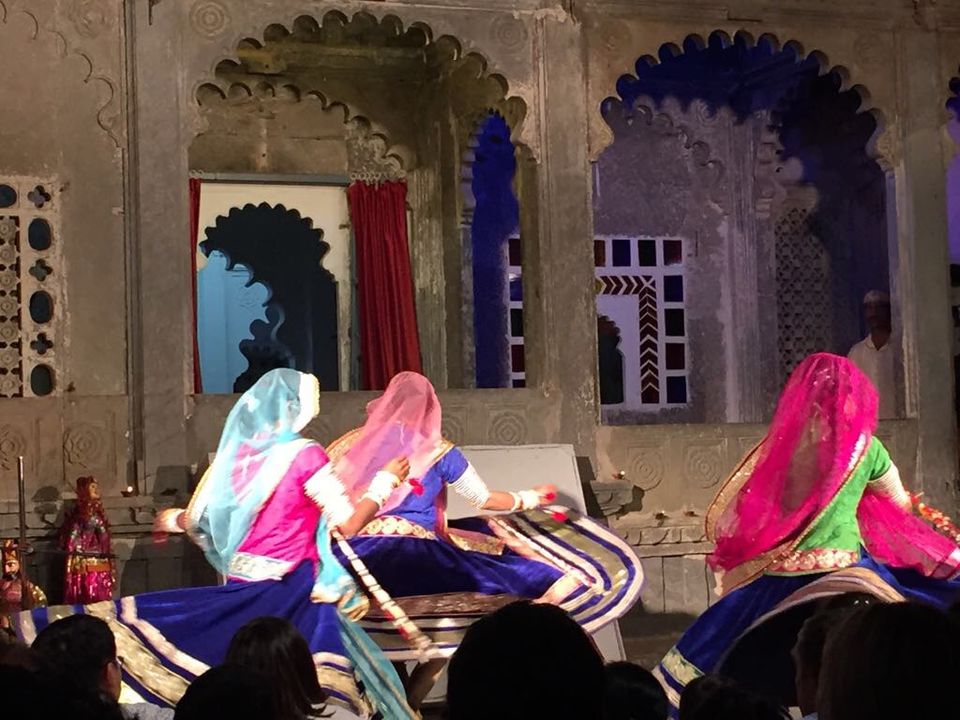
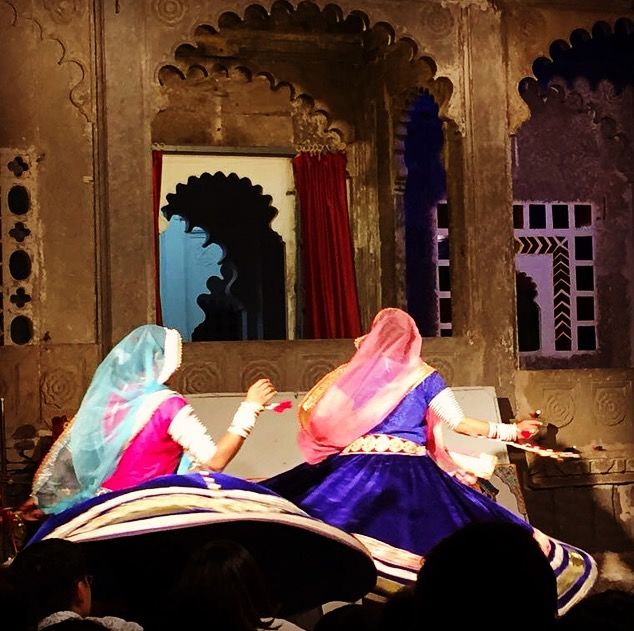
After the majestic performance of the Terah Taali, The male artists present a musical act depicting the victory of good over evil by enacting the famous Hindu mythological characters.
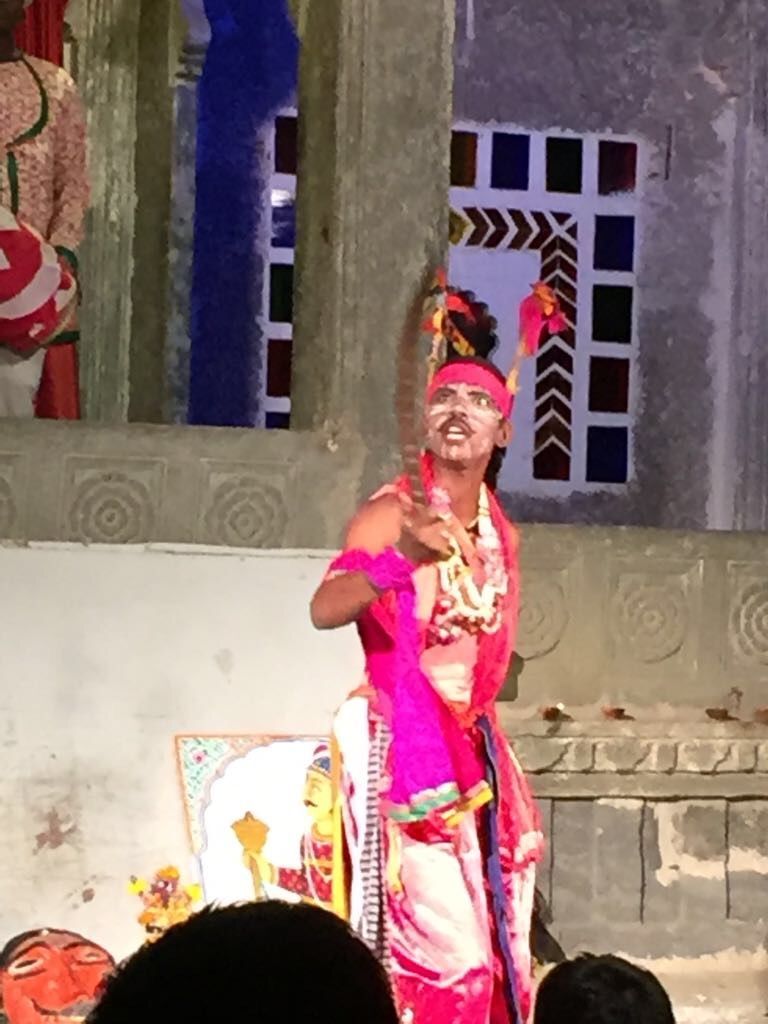
Puppet show, a famous traditional way of story telling in Rajasthan by using Puppets locally known as Kathputli. These hand tailored puppets are not simply a doll or a toy but are a way to send a message to the masses through captivating story telling. Earlier, these puppet shows were used to be a method of spreading social awareness.
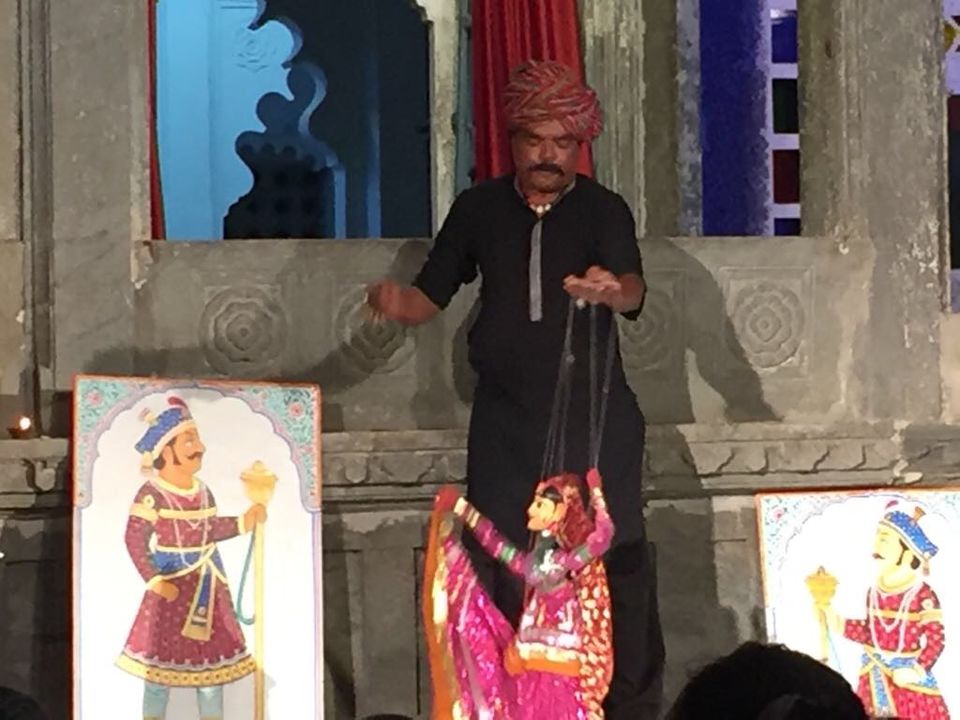
The Bhavai Dance concludes the event in full fervor. Bhavai is a genre of folk dance popular in Rajasthan. The male or female performers balance a number of earthen pots or brass pitchers as they dance nimbly.
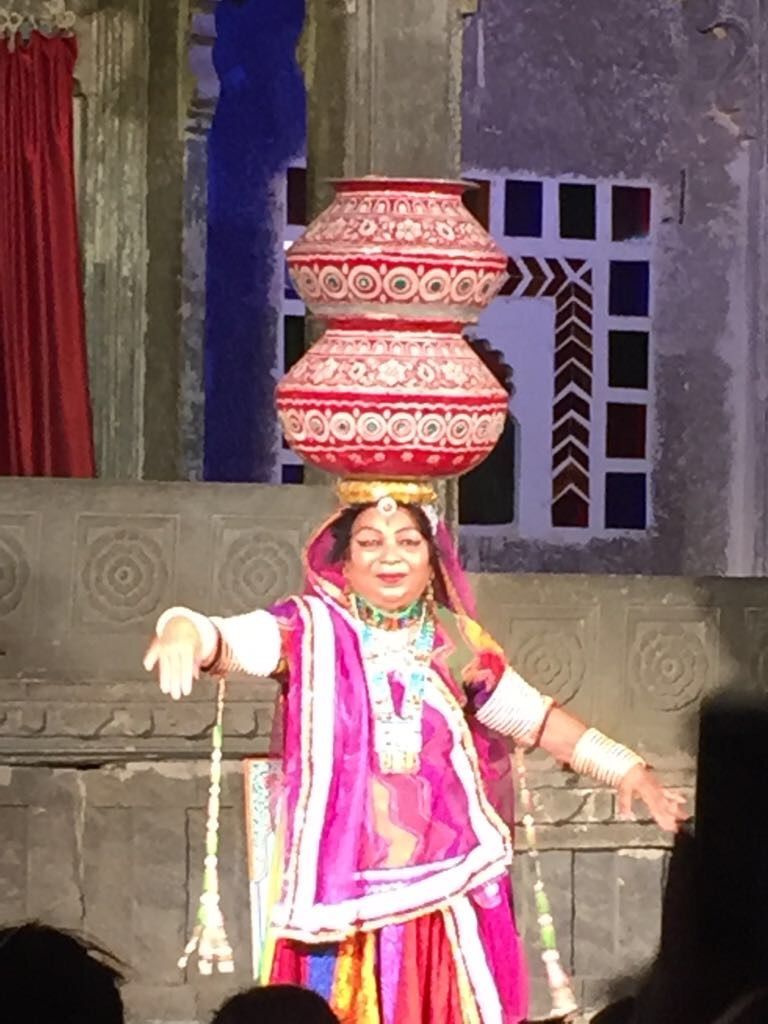
The showstopper of this event is this seventy years old lady balancing eleven earthen pots with utmost grace while dancing.
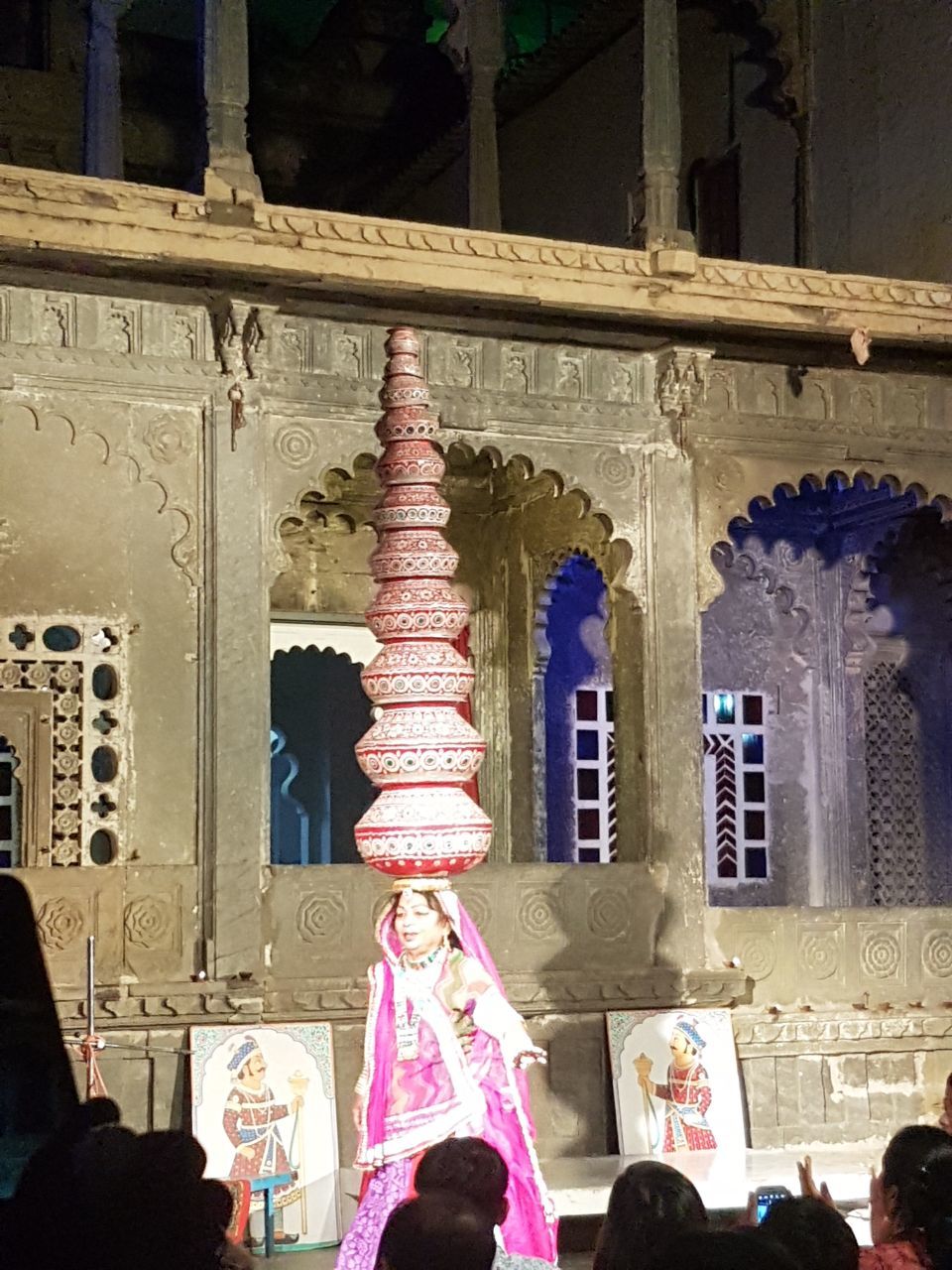
Show Timings: 07pm & 08pm
Tickets: Indians – 90 Inr, Foreigners – 150 Inr (Additional ticket worth 150 Inr for Cameras)
Show duration: 01 hour
I believe a trip to Rajasthan is not complete without experiencing their local delicacies, shop their local couture and witness their folk dances. For any history and culture buff, this place is high on magic.
